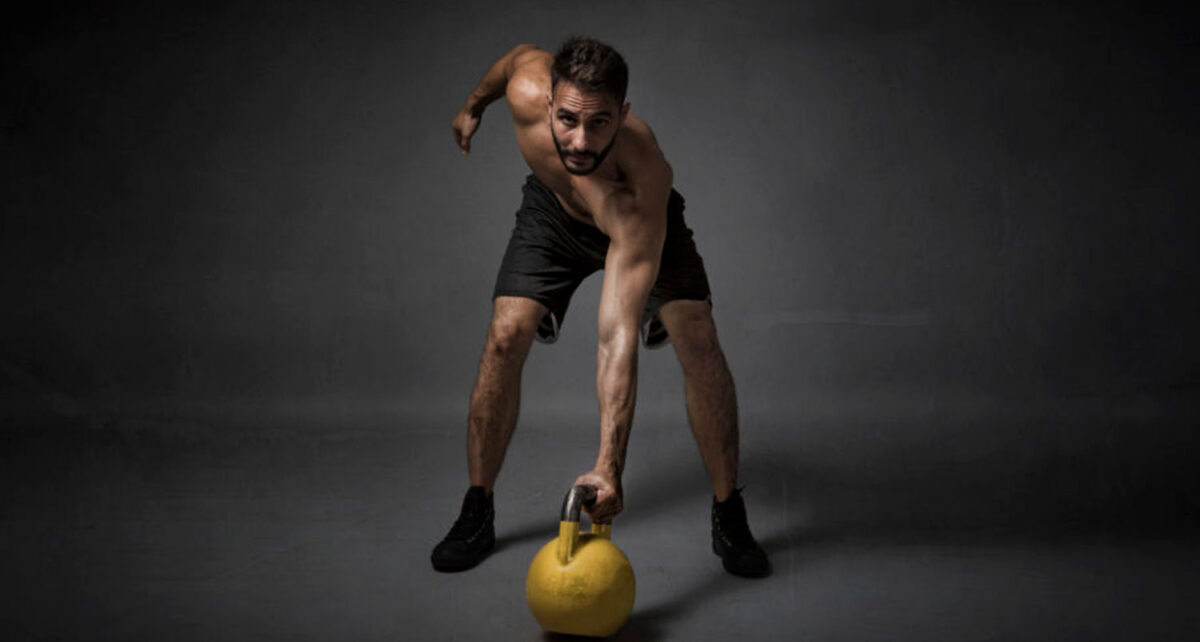While we may have damning proof from German bodybuilder Jo Linder that suggests women don’t care if you have a six-pack or not, it’s still an aesthetic feature that most men crave. However, even if your abdominals can be seen on full display, it doesn’t necessarily mean you’re going to be strong.
In fact, many people may not realise your abs and your core are two completely different things. As Fitlab states, “your core is a group of more than 20 muscles in the lower back, stomach and hips. The abs are a small fraction of this large and dynamic muscle group.”
It’s important you keep your core as strong as possible because it’s responsible for “keeping the spine stabilised, [helps you] maintain an upright body position and is critical for bending forward, backwards and twisting from side to side.”
So, how do you build a strong core? It sure as hell isn’t going to be by performing 1,000 sit-ups a day, but fitness trainer Cameron Martin, founder of The Martin Method, may have the answer.
Taking to Instagram recently, Cameron shared a relatively simple core workout using a kettlebell that, once performed a few times, will have you feeling stronger and more stable than ever before.
Cameron’s kettlebell core circuit comprises the following exercises:
1. Single Suitcase Deadlifts: The suitcase deadlift is a perfect core exercise to target the muscles on the side of your body; your obliques, for example. But it can actually be classed as a compound exercise because it targets multiple muscle groups at once.
To perform a single-arm suitcase deadlift, stand with your feet shoulder-width apart and have the kettlebell down on the floor next to your foot. Hinge at your hips, pushing your bum back (envisage sitting down on a chair) and keeping your shins straight to get down and pick up the kettlebell with one hand. Make sure to keep your spine and neck in a neutral position (i.e. don’t look ahead, but instead, allow your gaze to follow the movement of your body). Once you have the kettlebell in your hand, brace your core and, with your weight pushing through your feet, lift the kettlebell up and stand up straight.
2. Heavy Holds & Marches: Heavy kettlebell holds and marches may not look like they do much, but they’re actually incredibly beneficial, especially when combined. This is because heavy holds are a great way to create time under tension, since the holding of the kettlebell requires you to activate your core and remain activated for the entire duration of the hold. Adding in marches further helps to improve core control and improves stabilisation in your trunk.
To perform this core exercise, hold a kettlebell at around chest height, using both hands to grip the kettlebell handle. The aim here is to hold as heavy a weight as possible, so experiment with different weights to find one that is comfortable to hold for around 30-seconds. You don’t want it to be easy, but you also want to be able to complete the hold with good form. Once you’re holding the kettlebell and you feel stable, begin marching on the spot, bringing you knees as high as possible; ideally to at least a 90-degree angle.
3. Heavy Kettlebell Swings: The kettlebell swing is one of the best core exercises you can perform, not just with a kettlebell, but overall. This is because it is a full body exercise, as it targets practically every muscle in the body, making it one of the most efficient core exercises going. Once again, Cameron wants you to go as heavy as you can with the weight to maximise the benefits. However, you need to make sure you perform the kettlebell swing correctly before you can think about increasing the load.
It’s probably going to be easier to imitate Cameron’s swing movement in the video, but to summarise, stand with your feet slightly wider than shoulder-width apart and hold the kettlebell with both hands. To generate the swinging momentum, you need to hinge at the hips and thrust forward, sending the kettlebell up. Swing the kettlebell up until your arms are parallel with the floor, and when it comes back down, allow it to swing naturally between your legs. Absorb this momentum by hinging at the hips once again and thrust forward to send it back up.
Perform each movement for 30-seconds, with 15-seconds rest in between each. Once you’ve completed single arm suitcase deadlifts on both sides of the body, the heavy holds and marches, and the kettlebell swings, you would have completed one set. Perform for a total of 4 sets and you’ll be feeling the beneficial burn in no time.
Read Next
